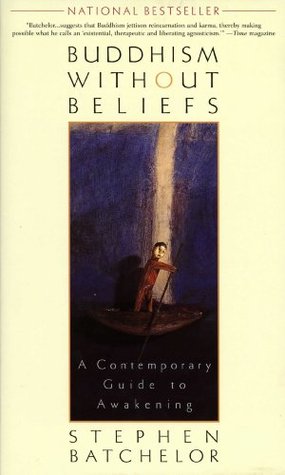More on this book
Community
Kindle Notes & Highlights
Read between
January 13 - January 16, 2023
Yet in failing to make this distinction, four ennobling truths to be acted upon are neatly turned into four propositions of fact to be believed.
At precisely this juncture, Buddhism becomes a religion.
Anguish maintains its power only as long as we allow it to intimidate
If we try to avoid a powerful wave looming above us on the beach, it will send us crashing into the sand and surf. But if we face it head-on and dive right into it, we discover only water.
The challenge of the first truth is to act before habitual reactions incapacitate us.
Letting go of a craving is not rejecting it but allowing it to be itself: a contingent state of mind that once arisen will pass away.
Instead of being a state of mind that you have, it becomes a compulsion that has you.
Awakening is no longer seen as something to attain in the distant future, for it is not a thing but a process—and this process is the path itself.
“Follow your reason as far as it will take you,” and negatively as: “Do not pretend that conclusions are certain which are not demonstrated or demonstrable.”
The dharma is not something to believe in but something to do.
An agnostic Buddhist eschews atheism as much as theism, and is as reluctant to regard the universe as devoid of meaning as endowed with meaning.
It confronts the enormity of having been born instead of reaching for the consolation of a belief.
Anguish emerges from craving for life to be other than it is.
Since death alone is certain and the time of death uncertain, what should I do?
The aim of this meditation is to awaken a felt-sense of what it means to live a life that will stop.
Do I keep postponing what I “really” want to do until conditions are more favorable?
In taking life for granted, we likewise fail to notice it.
How extraordinary it is to be here at all.
Notice how distraction is a flight from this, an escape from awe to worry and plans.
It is both the courage to face whatever life throws at us without losing equanimity, and the humility to treat every situation we encounter as one from which we can learn.
It is as though this body is a tree alive with scurrying feelings, rustling ideas, chattering thoughts, chirping intuitions.
What is here now is the unrepeatable impression left by all of this, which we call “me.” Yet so vivid and startling is this image that we confuse what is a mere impression for something that exists independently of what formed it.
Instead of taking ourselves so seriously, we discover the playful irony of a story that has never been told in quite this way before.
By dissolving this fiction through a centered vision of the transiency, ambiguity, and contingency of experience, we are freed to create ourself anew. The notion of the world as an alien reality composed of stubborn, discrete things is likewise the primary obstruction to world-creation. In dissolving this view through a vision of the world as a dynamic and interrelated whole of which we are an integral part, we are likewise freed to engage with the world afresh.
Grounded in awareness of transiency, ambiguity, and contingency, such a person values lightness of touch, flexibility and adaptability, a sense of humor and adventure, appreciation of other viewpoints, a celebration of difference.


